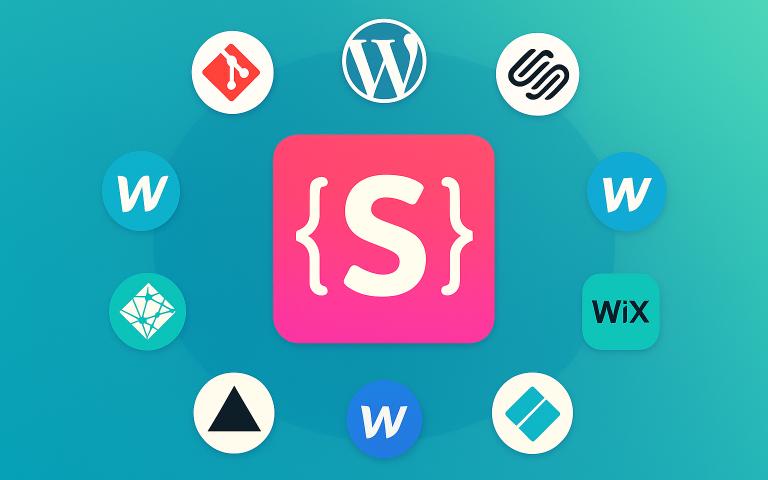When Statamic Makes Sense—and When It Doesn’t
Statamic is a Laravel-based CMS for content-driven sites and landing pages where you care about fast launch, an editor-friendly panel, multilingual support, and full control over data. Let’s see when it delivers the most value—and when you should look at site builders (Wix/Webflow/Squarespace) or “pure” Laravel instead.

What it is and why it’s useful
Statamic stores content in files (Markdown/YAML) under Git; the control panel is generated from schemas (Blueprints); templates are Antlers/Blade. That means quick setup, predictable deployments, and an easy path to scale with Laravel when the project grows in features or integrations.
Where Statamic saves effort and budget
If your project is mostly pages, articles, news, case studies, and their translations, Statamic gets you to “good” quickly without extra baggage. You define URL structure and metadata, turn on caching (up to fully static pages), connect forms to email or a CRM, and ship iteratively. Editors get a clean, uncluttered panel; developers get Git-versioned content, predictable releases, and room to extend in Laravel when needed.
This advantage is especially visible on multilingual sites (2–6 languages) with firm SEO requirements: hreflang, redirects, and data structure stay under your control. The more content and the less “heavy business logic” you have, the more cost-effective Statamic becomes—in both launch and maintenance.
Where Statamic isn’t the best fit
For complex e-commerce (variants, multi-currency, geo-taxes), marketplaces with roles and balances, personal accounts, real-time features, or dense integrations, you’ll move faster and safer with a dedicated stack—either a Laravel application as the product’s core, or a specialized e-commerce platform. Statamic can power the marketing site, but shouldn’t be the heart of a complex domain model.
Statamic vs. Wix/Webflow/Squarespace
Site builders win at day-zero speed: hosting, visual editor, templates—no developer required. You pay for that speed with flexibility and control. In Statamic you own data modeling, URL architecture, caching, releases, your repository and server. That matters as soon as you need non-standard blocks, “non-textbook” multilingual setups, custom integrations, or stricter performance/security.
Design constraints in Wix-like platforms (and why they matter)
Even the best builders impose limits that are invisible during prototyping but painful at scale:
- Grid and nesting. Layouts sit on a predefined layer/container model. Deep nesting, broken grids, container queries, or smart auto-layouts are often unavailable or hacky.
- Breakpoints and responsive behavior. The number and logic of breakpoints are fixed. Fine-grained typography, modular spacing, and component behavior between breakpoints are limited.
- Reusable components. Symbols/components exist, but props/variants are weaker than in a real design system. Complex states (hover/focus/disabled/ARIA) follow the editor’s rules, not your product’s.
- Animation and interaction. Decorative effects are fine; complex timelines, data-driven sync, scroll-based scenes, or performance on low-end devices are constrained.
- Custom code and styles. You can inject code, but not at every layer you need; CSS isolation is partial; script size/order limits apply. You can’t fully control asset bundling, critical CSS, HTTP headers, or security policies.
- Dynamic content. CMS collections are handy but capped on relations, sorting, and conditional logic. You won’t get Laravel-grade data modeling and validation.
- Multilingual and SEO. Basics work, but nuances (advanced hreflang linking, canonical rules for filters/pagination, custom URL structures, automated redirect strategies) are bound by platform settings.
- Export and portability. You often can’t export production-ready code with data and logic intact. That’s vendor lock-in: pricing, API, or policy changes leave few options.
- Performance and control. Limited control over cache/CDN rules, image pipelines (auto-conversion/presets/AVIF/WebP), loading priority, Preload/Preconnect. As content grows, Core Web Vitals can suffer.
A builder is great while you live within standard blocks, 1–2 languages, and basic forms. Once you need a design system, custom components, richer content models, and SEO architecture, the guardrails show.
Quick look at alternatives
WordPress remains editor-friendly with vast plugins, but demands discipline on security, updates, conflicts, and speed. Headless CMSs (e.g., Strapi/Contentful) provide strong APIs but require time for frontend and DevOps. “Pure” Laravel is ideal when the core is an application with business logic—not just a content site.
How to decide without headaches
Ask what dominates—content or logic. If content leads, you want a fast launch, multilingual support, and SEO control, Statamic gives a predictable outcome and keeps doors open: you can extend in Laravel later without swapping platforms. If requirements revolve around accounts, calculations, dashboards, and real-time workflows—let Statamic (or another CMS) handle the marketing shell and build the product core as an application.
Conclusion
Statamic is a strong foundation for modern content sites: tidy admin, clean data model, controlled deployments, and Laravel flexibility when you grow. Builders are faster on day one, but their design and technical constraints surface as you scale. The earlier you gauge the content-to-logic ratio, the better your tooling choice—and the cheaper your long-term maintenance.
Get in touch
Need help with Statamic?
Tell us your context and the outcome you want, and we’ll suggest the simplest next step.